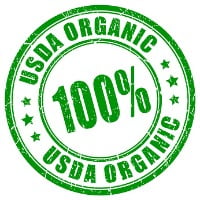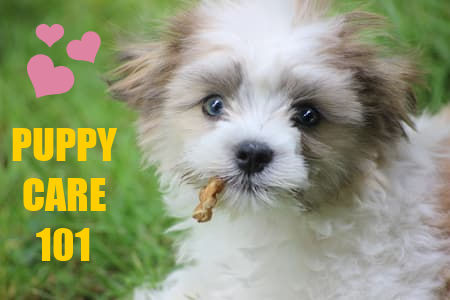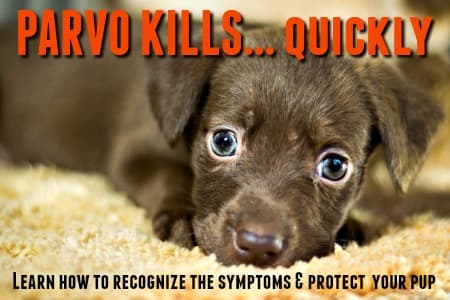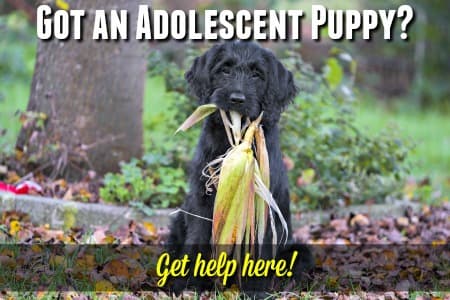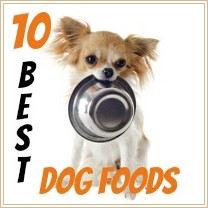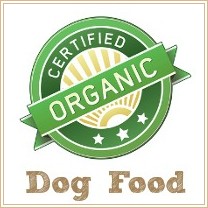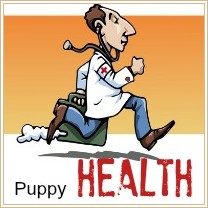FYI: If you buy something through a link on this site I may earn a commission - at NO extra cost to you.
All About Dog Food Allergies
Dog food allergies account for about 20% of all allergic reactions in dogs, but the symptoms often go unrecognized as they affect the skin and ears rather than the digestive system.
Also, you might think that an allergy is most likely to show up the first time Fido eats a specific food.... but it's actually more likely to happen after a dog has been eating a particular food without any problem for years.
In fact allergy symptoms associated with diet are much more likely to show up after months, or even years. It's rare to see a food allergies in a pup who is younger than 5 or 6 months of age.
Your pup/dog is very unlikely to have an allergic reaction to a food the first time he eats it, but if he is simply 'sensitive' or 'intolerant' to ingredients, then he might end up with an upset tummy even if he's only eaten a few bites.
A true dog food allergy almost always causes symptoms which affect the skin in some way.
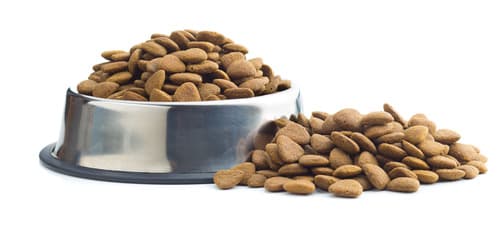
Symptoms of Dog Food Allergies
The most common symptoms of a food allergy in dogs are:
- Irritated or itchy skin
- Red or inflamed areas of skin (aka hot spots)
- Scaly or scabby patches of skin
- Patchy hair loss around irritated skin
- Itchy ears or recurring ear infections
- Chronic head shaking (related to ear
This causes your poor dog to get pulled into an endless cycle of itch - scratch - lick, which usually makes him feel utterly miserable and can damage the skin making it prone to secondary infection.
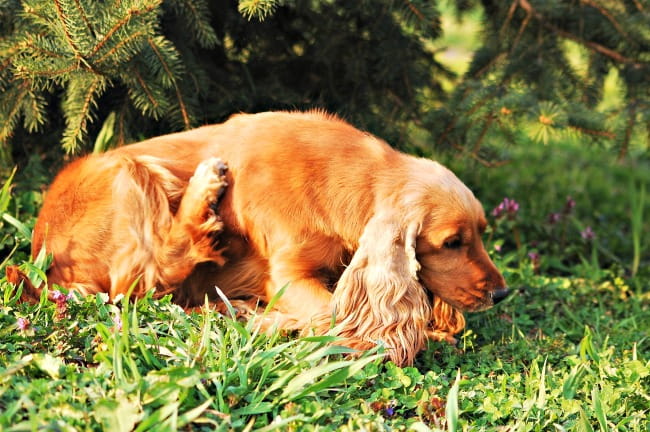
The areas where dog food allergy related itching tends to be most intense include:
- Face
- Feet/paws
- Back legs
- Belly and groin
- Above the tail
It's worth remembering that there are also other conditions which can cause itchy skin and hair loss in dogs. These include Mange (caused by tiny skin mites) and fleas.
You can also learn more about the different types of canine allergies - and match symptoms with 'allergy triggers' on this page - Canine Allergies
If patchy hair loss is the only symptom your pup or dog is showing, check out this page to find out what could be causing the problem.
Other symptoms occasionally appear as a result of dog food allergies, but they are much more rare and could indicate an altogether different health problem as well. These can include
- Irritated eyes with/without discharge
- 'Runny' nose or discharge, sneezing or wheezing
- Behavior problems such as hyper-activity or unusual aggressiveness
Vomiting, diarrhea, loose stools, very frequent stools and/or excessive 'gas' are not usually a symptom of dog food allergies. They're much more likely to indicate a food intolerance or sensitivity.
But as vomiting and diarrhea are also among the most common symptoms of dog illnesses (both minor and major) any recurring digestive upset should be investigated by your vet
Other signs that your dog's discomfort is due to a food allergy include:
- Chronic, year round symptoms not influenced by seasonal changes
- Vet prescribed antihistamines and/or steroid medications haven't helped
- Your pup is younger than 6 months
Allergy-Prone Dog Food Ingredients
All dogs are different of course, and what causes a reaction in one dog might be well tolerated in another.
But there are some ingredients which are more likely to trigger dog food allergies than others.
These include protein sources such as:
- Beef
- Chicken
- Pork
- Fish
- Eggs
- Dairy
Free range and/or organically raised livestock and wild-caught fish who are not given artificial growth hormones or antibiotics are less likely to cause problems.
Grains such as:
- Corn
- Soy
- Wheat
Genetically modified grains are more likely to cause allergies than those that are grown organically.
Added extras! Dog foods, especially the cheaper, more generic brands, can contain an awful lot of 'junk'. These ingredients are the root of many dog food allergies and include:
- Artificial Preservatives
- Artificial additives
- Artificial colors
- Contaminated ingredients, often grains, which contain pesticides, mold, insects and so on.
- Sucrose
There are a few ingredients most often used in human food that are also known to cause food allergies in dogs. These include fermented cheese, yeast, beef sausage, canned tuna, egg whites and even tomatoes.
Another good reason not to feed your pup scraps from the table!
Treating Dog Food Allergies
The best way to put an end to your dog's food-associated allergies is obviously to stop feeding him the ingredients that 'trigger' the reaction. But of course, that's easier said than done!
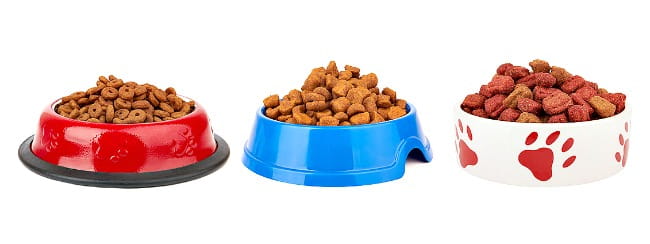
The simplest first step is to change to an entirely different formula and brand, try to find ingredients that are not the same as the ones in the food causing the trouble.
For example, if you're feeding a chicken formula right now, try a different protein source. Beef might be a good option, or explore the less common proteins such as salmon, venison, duck etc. Hypoallergenic dog food formulas can also be good.
Although grain can cause some digestive issues for humans, it's unlikely to be a cause of allergic reactions in dogs and while grain-free dog foods have become popular the FDA has found evidence that the peas, lentils and potatoes which are used in many grain free formulas may cause dilated cardiomyopathy in dogs.
DCM can lead to serious heart problems or even death, so although studies are on-going if you're looking for a grain free formula find one that doesn't contain peas and lentil, or potatoes if possible.
Many cheaper foods contain low quality ingredients, chemicals, artificial ingredients and so on. These can also cause allergy issues (along with other health problems, some serious).
Organic dog foods contain only safe, natural ingredients which are unlikely to cause the same problems.
Also, remember that his dog food isn't all that your dog eats. He also has treats, biscuits, bones and maybe even table scraps.
Cut back to one type of treat, make it one that contains as similar ingredients as possible to his kibble, and that contains all-natural ingredients and is free of artificial additives.
Then be patient. His allergy symptoms aren't going to clear up within a few hours even if you have managed to eliminate the trigger.
It can take weeks for all of the allergen to leave his body, but you should notice a difference within a few days.
If this isn't successful, then the next step is either an elimination diet, or a trip to the vet's office for allergy testing.
Allergy tests should be able to determine what it is that your pup is reacting to, and that obviously makes it easier to get his diet in line. I'd recommend discussing this option with your vet and asking his advice.
How to put your dog on an elimination diet
This basically means you completely eliminate the diet your pup is on now and replace it with a new diet consisting of protein and carbohydrate ingredients that he's not encountered before.
You'll then slowly re-introduce the 'old' ingredients, one-by-one, until the symptoms reappear - that way you know what caused it!
Your pup needs to be on this elimination diet for about 12 weeks and it's important you only follow this route under the supervision of a veterinarian to make sure he stays healthy and gets what he needs nutritionally.
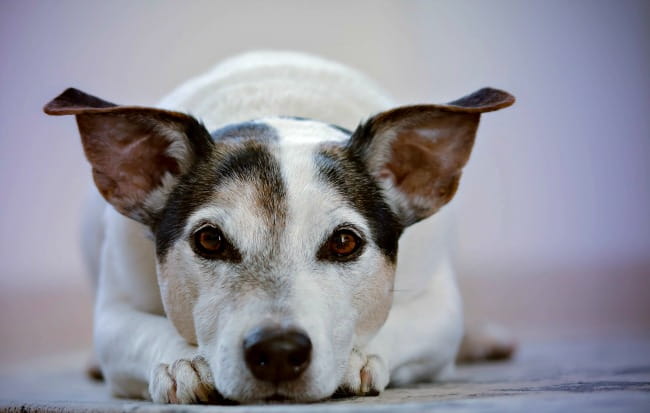
Once you've
isolated the ingredients that are causing your dog's symptoms,
it's fairly easy to make sure he doesn't eat anything containing
those particular things.
There are several commercial dog foods that contain natural, holistic and hypo-allergenic ingredients that you can use. Look for those with ingredients such as lamb and rice, duck and potato, even venison, buffalo, ostrich, quail and so on.
More exotic or unusual ingredients like these are less likely to cause problems as your pup or dog hasn't been exposed to them previously.
It's important not to jump from one dog food to another while you're trying out an elimination diet. You must give the food you've chosen enough time to show results.
Trying one food after another is likely to cause MORE problems as the chances of another allergic reaction are higher at this time and you'll possibly be 'sensitizing' your dog to new ingredients.
If an elimination diet isn't successful in getting rid of his allergies, talk to your vet before trying a second food choice.
Home Made or Raw Dog Food For Allergies
Alternatively, you can make your own - homemade dog food this makes it very easy to know EXACTLY what your pup is eating.
It's not as hard as you may think and can be very rewarding, just be sure that you only use ingredients that are safe for Fido to eat!
It's also super easy to make your own dog treats at home, which eliminates the risks of sub-par ingredients and gives you the chance to add extra, high quality nutrition to his diet. I do this regularly and it's actually fun to make homemade dog treat recipes for my dogs, they love baking day and so do I.
Dogs who have allergies triggered by certain dog
food ingredients, often do very well on a BARF or raw food diet.
It's not something every owner is interested in, but there are definite health advantages in feeding raw. To find out more, check out my Raw Food Diet For Dogs page.
you might also like...
- Home
- About Dog Food
- Dog Food Allergies
FTC Disclosure: Some pages on this site contain affiliate links. I may earn on qualified purchases.


